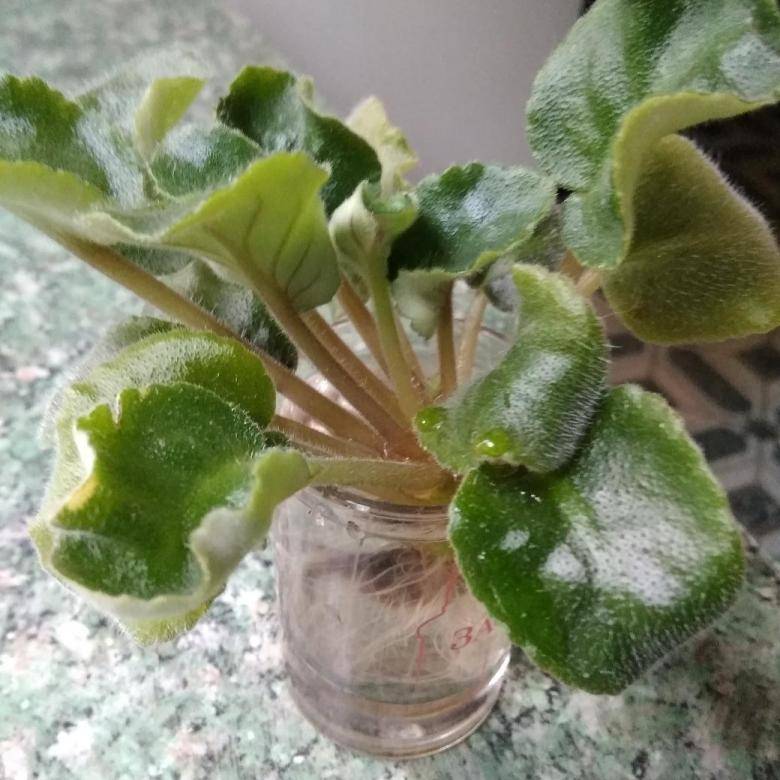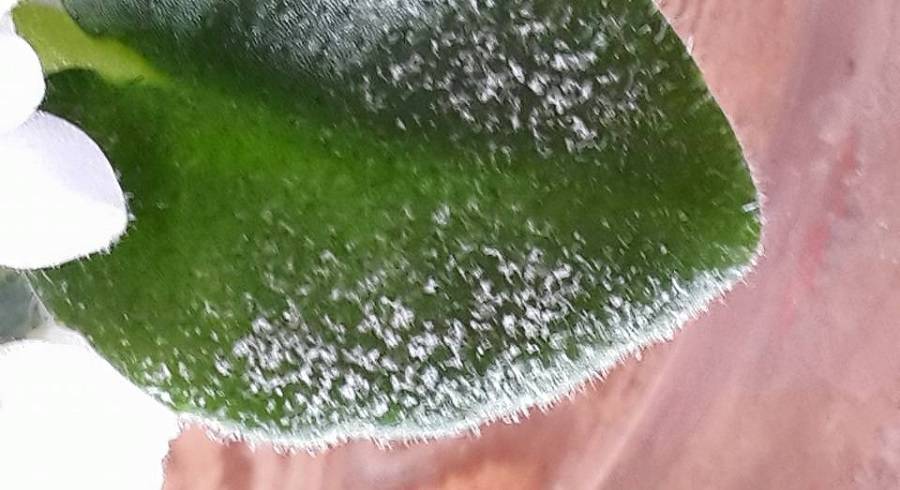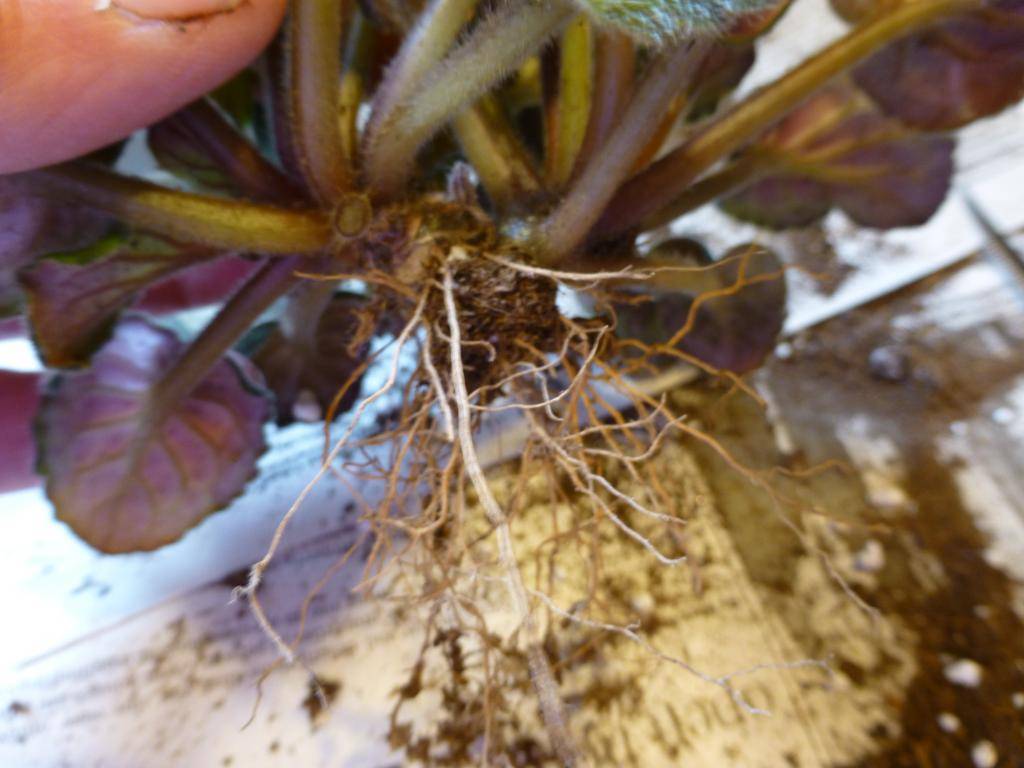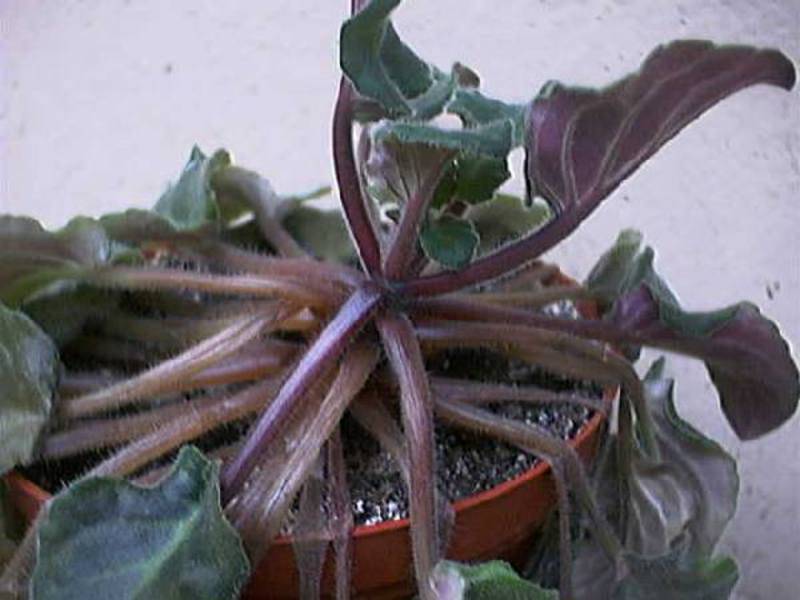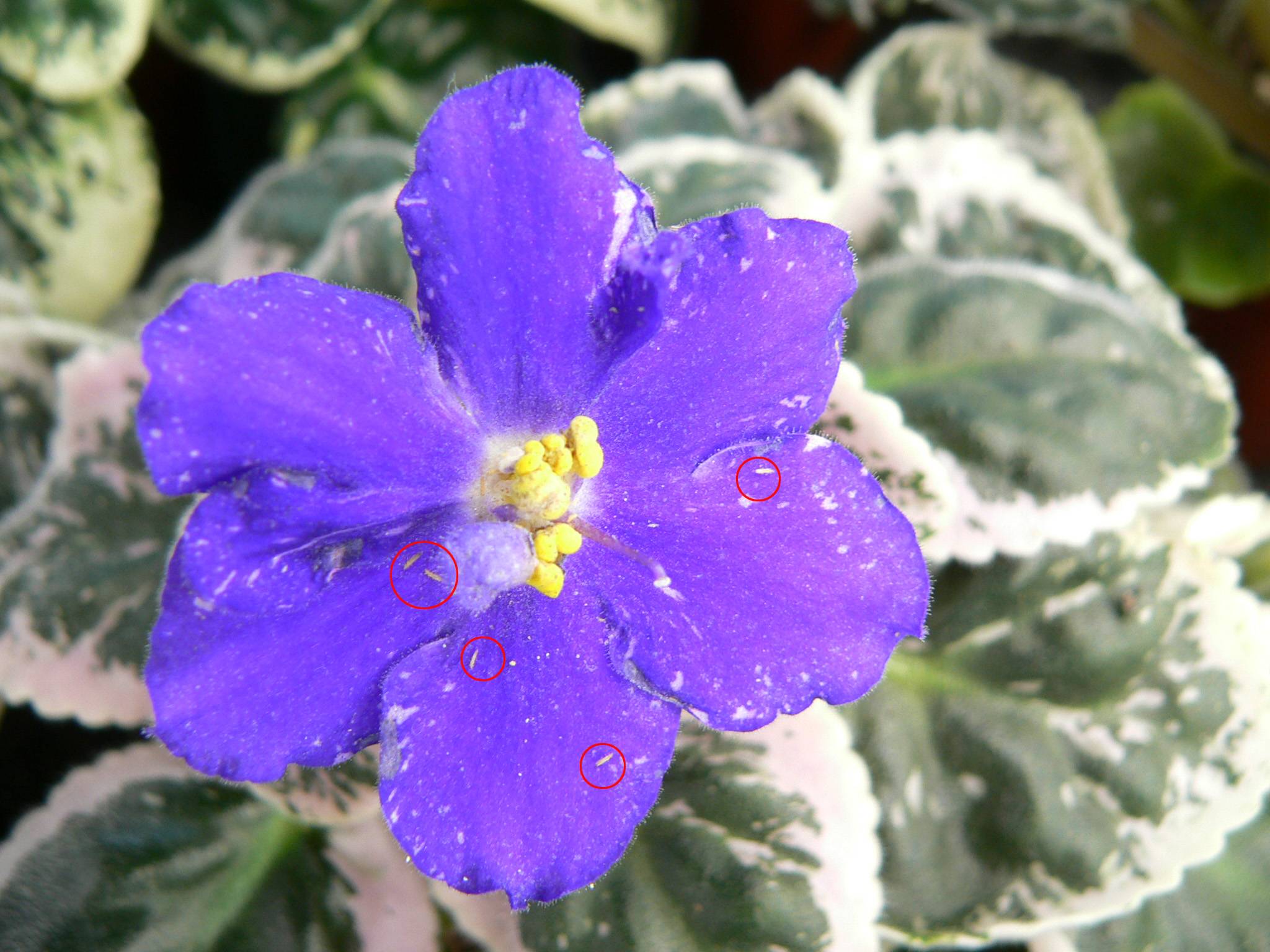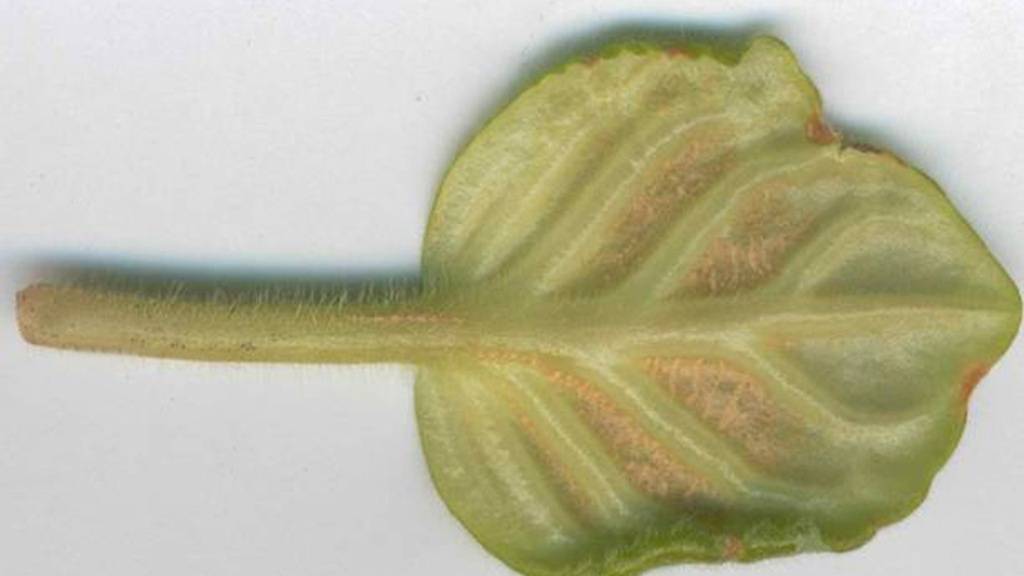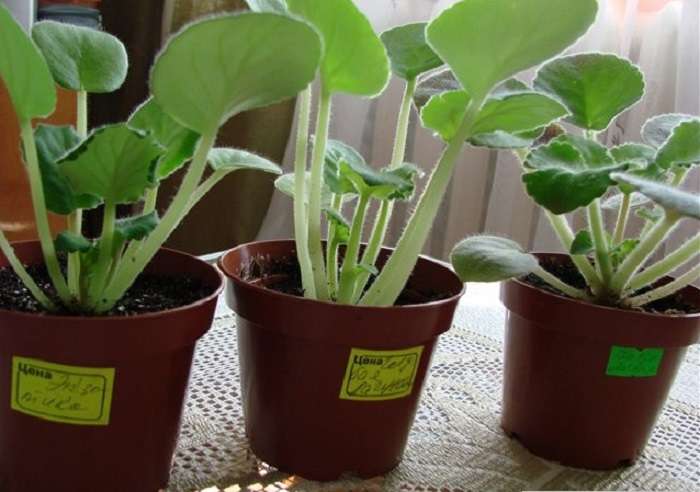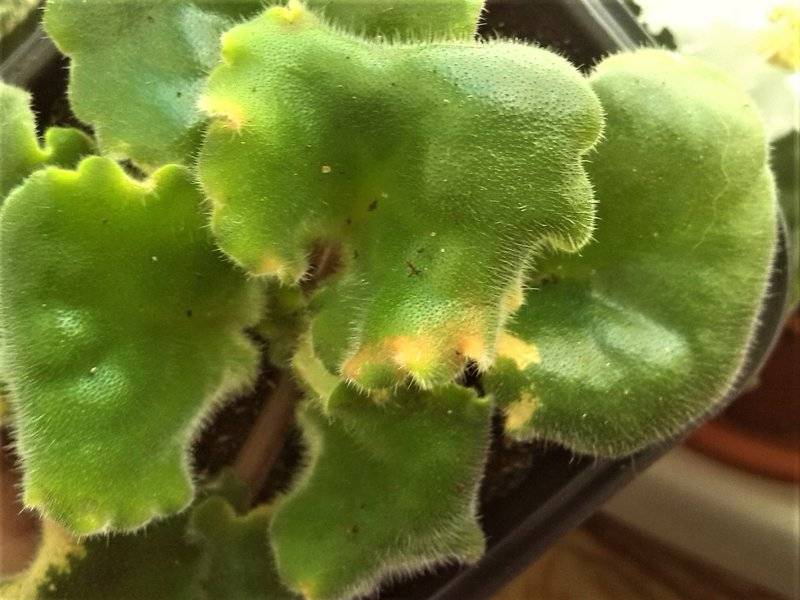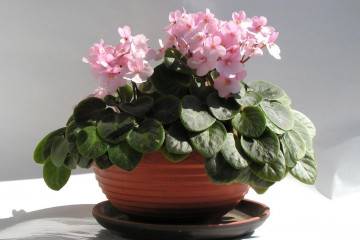Diseases of violets - prevention and care of diseased plants
Content:
Home violet or Saintpaulia is a genus of flowering plants of the Gesneriaceae family. The favorite indoor flower in plant growing is called the uzambar violet. Saintpaulia is demanding on the conditions of detention, in order to achieve abundant flowering, proper handling is necessary. In some cases, it can get sick or suffer from insect pests.
Basic rules of care
It is not difficult to take care of the violet at home, the main thing is to comply with the necessary requirements for the following parameters:
- The choice of soil and pot. For Saintpaulia, a soil with a neutral PH is suitable. You can use a commercially available mixture or prepare it yourself from humus, turf, coniferous soil and peat with the addition of baking powder. Pots should be chosen small, with a diameter smaller than the flower rosette.
- Accommodation and light. Violet loves light, but not direct sunlight. Therefore, it is better to place the pots on the west or east side. Daylight hours should be at least 10 hours, so fluorescent lamps will be needed in winter.
- Temperature and humidity. The optimum temperature is 20-23 degrees, and in winter, a decrease to 18 is permissible. On hot days, the room should be regularly ventilated, avoiding drafts. Air humidity must be at least 50%. Plants should not be sprayed. During the heating period, it is better not to keep flowers near the radiators.
- Watering. Use water at room temperature and carry out the procedure as the top layer of the soil dries. Avoid stagnation of water in the roots, timely empty the sump. It is recommended to limit watering in winter.
- Fertilization. Top dressing is carried out during the growing season and flowering, approximately 2 times a month.
For reproduction of violets, the leafy part of the plant is taken. The stalk is kept in water until roots are formed, then planted in loose earth under a shelter. Can be propagated by seed.
Diseases and methods of dealing with them
Diseases differ in symptoms. The most common diseases of violets that can cause wilting and death of a plant are associated with the multiplication of fungi and bacteria.
Powdery mildew
Powdery mildew on violets is of two types - false and true, and the source of infection is fungal spores. The main symptom of the disease is that the tops of the leaves and stems are covered with a white coating that looks like flour. Downy mildew differs from the real one in rusty spots that appear on different parts of the plant.
The reasons are infection from other flowers or soil, excess nitrogen in the soil against the background of a lack of phosphorus and potassium. The wrong content can also provoke the disease: an increased level of humidity, dust on the leaves.
How to deal with powdery mildew on violets at home:
- When a disease is detected, the flower is isolated.
- Small foci are treated with sulfur.
- For severe lesions, fungicides are used: Topaz with the active ingredient penconazole, a broad-spectrum drug Fundazol, a systemic agent Benlate.
- In a liter of water, 3 ml of iodine is diluted and violet leaves with a white bloom are treated.
- Heat half a bucket of water, add a spoonful of dry mustard and spray the plant with the resulting solution.
Gray rot
Infection is provoked by pathogenic fungi that reproduce in conditions of high humidity and at low temperatures. The leaves turn yellow, the plant looks lethargic, and the reason for this is rotting roots. The disease is dangerous because it can move from the lower leaves to the top.
How to save a violet:
- Remove the flower from the pot and examine the root system.
- Remove diseased roots.
- Treat the plant with an antifungal drug.
- Transplant into a new pot, completely replacing the soil.
If the plant is badly damaged and cannot be reanimated, select healthy leaves to preserve the variety. Treat with fungicide and keep in water until roots appear.
Rust
The disease is caused by a fungus, most often occurs in the winter-spring period due to the reduced immunity of the plant and a lack of light.
How to treat violet disease, which manifests itself as rusty spots on the leaves:
- Remove wilted leaves with signs of rust.
- Treat with antifungal drugs (for example, Fundazol, Saprol, Fitosporin-M).
- Prepare a solution (200 g of green soap and 15 g of copper sulphate for 5 liters of hot water) and process the rusty leaves.
Bacteriosis
A dangerous disease from which flowers die within a month. It begins with the appearance of brown spots on the aerial parts of the plant, then the leaves change color, become soft, covered with mucus, and the violet disappears. Most often, the disease develops in hot weather if care requirements are not followed.
How to cure Saintpaulia:
- Remove the affected parts of the plant.
- Disinfect the soil with antibacterial drugs.
If you can't save the violet, to preserve the species you need to take a healthy leaf cutting for reproduction. To prevent disease and increase the level of stress resistance, treatment with Epin or Zircon fertilizers is recommended.
Late blight
An infectious disease is caused by fungi. Infection can occur from diseased material, a new plant at home, or poor soil. It develops rapidly in high humidity on hot days.
The disease starts from the root system. Then the leaves of the violets lose their density, become like cotton wool, and even with damp ground, they seem to wither. Dark spots form on them, which appear transparent from below.
At the first signs of late blight, you need to do the following:
- Remove the flower from the pot and examine the roots.
- Remove rotten parts.
- Treat the plant with a product containing copper.
- Pour peat and baking powder into a new pot, treat with a biological product Fitosporin.
- Plant a violet and cover with a bag.
If the flower has new roots, then it is saved. If the disease strongly affected Saintpaulia, you need to remove all sore spots, cutting off the rot completely.
Fusarium
The disease is caused by toxin substances secreted by fungi. Through the soil, they penetrate into the root system, and then infect the stems, leaves, peduncles. Most often it manifests itself in the cold season, as well as due to improper or insufficient feeding after flowering.
The leaves turn brown, can curl and crumble. You can see that the roots of the plant start to rot. If the main stem and leaf stalks are blackened, the flower cannot be saved.
Treatment of fusarium is the same as for late blight - removal of diseased roots, transplanting into a new pot and treatment with systemic drugs for the fungus (for example, Infinito, Trichodermin).
Flower parasites
Insect pests are unpleasant guests on Saintpaulia. What parasites are dangerous for a flower is described below.
Violet thrips
Very small insects that suck sap from plants. It is difficult to see them with the naked eye, and their presence can be identified by their characteristic features: dried stamens, thickening of the pistil, shortened flowering period, gray bloom on the leaves and their deformation, falling off of unopened buds. The danger of thrips is also that they are carriers of diseases.
Mites
Insects are divided into categories:
- soft-bodied,
- armored,
- spiderweb,
- flat beetles.
Violets are attacked by orange flat and cyclamen mites. What symptoms indicate the life of pests: thickening of the rosette, weak leaves with bloom, dropping of buds, rash of pollen, dark spots on the inside of the leaf plates.
Mealybug on violets
Sucking pest 3-6 mm in size with many legs and long antennae. It produces mucus, which disrupts the gas exchange of the plant, and also damages the leaves and stems, as a result of which the flower stops growing. The root system also suffers, which is covered with mold.
The peak of parasite activity occurs in late spring and early autumn. Mold on the ground can be a sign that mealybugs are living on the violet.
Ways to fight
To combat thrips, you can try folk methods in combination with chemical fungicides:
- Dilute 1 ml of Fufanon in a liter of warm water and lower the aerial part of the flower into the solution for a few seconds.
- Dilute the ampoule of the biological product Akarin and the cap of the insecticidal shampoo in 500 ml of water, spray the plant.
Iskra-Bio insecticide can be used against thrips. It paralyzes pests and is not addictive. Spintor is considered effective. One treatment is enough to eliminate insects, compatible with other biological and chemical agents.
To get rid of ticks on violets, they will have to be treated with chemicals - acaricides. This is Sunmight, Mobento, Starmite. The most effective combination will be with anti-stress feeding (Epin, Zircon).
In the early stages of a mealybug lesion, you can try folk remedies:
- soapy water treatment (5 g of soap per liter of water);
- spraying with a solution of olive oil (2 tablespoons per liter of water);
- spraying with garlic infusion (5 cloves per liter of boiling water).
In other cases, you cannot do without pesticides - Phosphamide, Aktara, Aktellik. The most effective drugs are those that include Diazinon, Parathion, Malathion.
Problems due to improper care
Most often, signs of disease on a violet are associated with improper care, due to which the plant's immunity is weakened. This could be:
- excessive or insufficient watering;
- wrong choice of fertilizers;
- non-observance of temperature and humidity standards, drafts;
- direct sunlight on the flower;
- high soil PH.
Many gardeners are interested in the question of why the leaves of the violet rise up. Most likely, they are drawn to the light. Also, the reason may be thickening of the outlet, low humidity, proximity to batteries or heating appliances.
Why else can a violet lift leaves up:
- features of the variety;
- improper development;
- scarcity of soil mixture.
Are the leaves of the violet crushed, faded and up? This description speaks of a lack of light.If the leaf plates began to curl inward, this may be the result of the vital activity of mites, as well as excessive watering and an excess of nitrogen fertilizers.
What if a violet has dead leaves? The wilting of a flower signals non-compliance with the rules of watering, lighting, feeding. Yellowed leaves can be caused by water or sunburn. Circular spots are formed during the cold season when the plant is placed in a draft.
If the leaves turn black, the reason for this may be excessive soil moisture, prolonged exposure to cold air, and a lack of nutrients. White bloom on violets or unusual colored spots is a sign of infection.
If flowers and flower buds wither in Saintpaulia, there may be several reasons:
- dry air;
- high temperature in the room;
- lack of lighting;
- low level of soil acidity;
- use of unbalanced fertilizers.
If the home violet does not bloom, you will have to correct all the flaws in the content - from the pot and the choice of soil to the rules for watering.
A set of measures against diseases and pests
There are simple prevention rules, the observance of which will protect Saintpaulia from infection with fungus and parasites:
- isolation of new flowers from home flowers for 1-2 months;
- exclusion of contact with field plants and fresh vegetables;
- regular treatment with water at room temperature and inspection;
- wet cleaning in places where violets are placed;
- timely processing of pots and pallets;
- compliance with basic care requirements.
Diseases and pests from which violets suffer can be very dangerous and lead to their death. The main condition for good immunity is proper care and maintenance. This will help grow a healthy and flowering plant.

